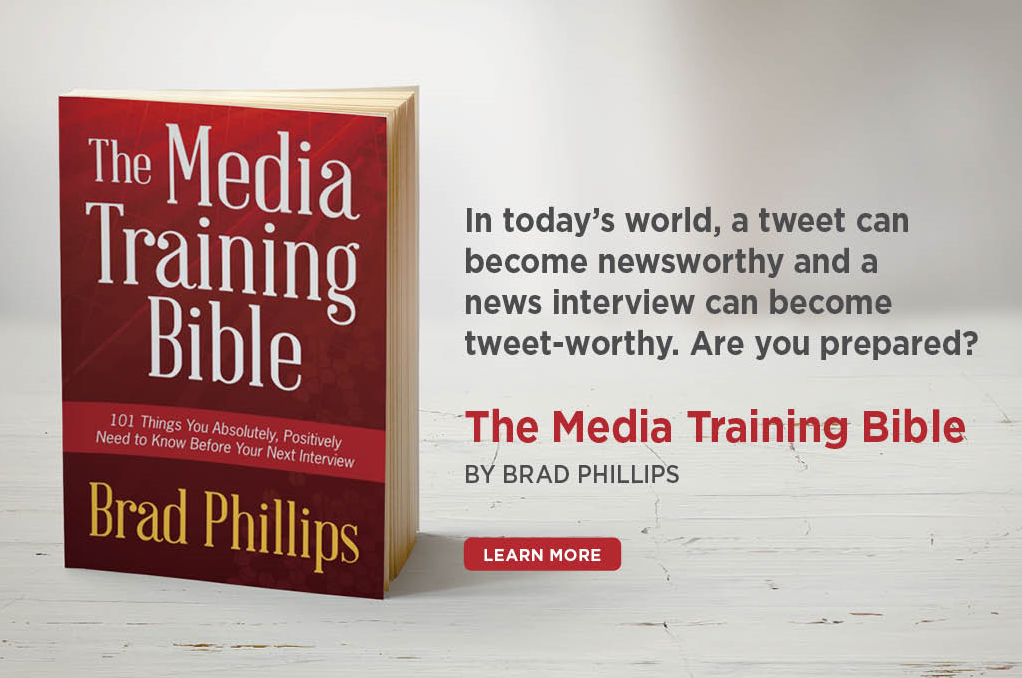The Three Biggest Media Mistakes Top Executives Make
Top executives make many of the same media mistakes the rest of us do — but their missteps are often magnified, becoming top headlines on news and business websites worldwide.
Although every executive is different, we’ve observed clear trend lines in our executive media training workshops with hundreds of top C-suite inhabitants since starting Throughline Group in 2004. In this post, I’ll share three of the mistakes we commonly see executives make — and offer advice to help prevent them.

1. They’re Too Focused on Internal Structure
In our media training sessions, I usually lead off practice interviews with a seemingly simple question: Can you tell me about your company? Roughly 95 percent of the time, the executive gives me an answer rooted in their company’s structure:
“We are an association based in Washington, DC that represents more than 50,000 small business owners in the United States who are trying to expand trade into foreign markets.”
That’s not a bad answer, per se, because it communicates real information. But it does little to break through the clutter of the thousands of messages we’re all exposed to each day. An answer that focuses on the why instead of the what attracts the audience’s attention more effectively:
“If you’re a small business owner and manufacture a product, you might want to export your product into foreign markets—but few entrepreneurs have the expertise to be able to do that alone. Our association represents more than 50,000 of those business owners, and helps them get their products—everything from shoes to handmade toys to gourmet foods—into markets they wouldn’t be able to reach on their own.”
That answer is not only more externally focused, but is also more concrete—and therefore more broadly understandable.
2. They Forget To Sell The Positives
Executives are usually keenly aware of the internal and external criticisms of their company or organization. Oftentimes, they encounter such objections during media interviews, panel discussions, and contentious client meetings.
As a result, many executives get so used to defending their work that they forget to continue selling it.
A recent client serves as the perfect example. Her organization works in international relief. Many critics have pointed out how slow her group is to respond to natural disasters. When I asked her about that during a practice interview, she answered along these lines:
“We do the best we can, but there are several factors that are outside of our control and slow us down. We can’t get into a devastated area until it’s safe to do so, and we need the support of the local government before we can enter an area.”
When we reviewed that answer, I reminded her that her organization had made real and impressive strides to shrink their response time. When we conducted the next practice round, she was ready:
“Ten years ago, it might have taken us a week to get a full team on the ground. Today, we can do that in three days. We’d all like that to be even faster—but we shouldn’t lose sight of the fact that we’ve made dramatic improvements, which have helped to save countless lives.”

3. They Say Too Much
There are many reasons executives might say too much during an interview. Sometimes it’s a matter of ego or lack of discipline, but more often, it’s symptomatic of an executive who is having a difficult time reducing their entire organization’s work into a tight 15-second sound bite.
Whatever the reason, an executive who says too much gives reporters a bounty of quotes from which to choose. That’s problematic, because loquacious executives wander away from their messages, leading to off-topic quotes that are of secondary importance at best and dangerous at worst.
There’s an easy technique to help shorten an executive’s response. After the top official delivers a lengthy reply, take out a stopwatch and say, “That was great. Now can you do that again in 20 seconds?”
That shorter answer is almost always stronger, because the executive is forced to drop the parts of their reply that aren’t absolutely crucial. Most of the time, you’ll find that the executive’s language becomes more assertive as well.
To summarize, executives can correct these three media mistakes by making sure their responses are externally focused, positive (when appropriate), and tight.





You bring up an interesting point about executives saying too much. One CEO I worked with in a past life was known for being particularly loquacious, but only in the morning when he was fresh. By the afternoon, he was usually more tired and less talkative. So we scheduled (or at least tried to schedule) all interviews with top-tier media outlets for the afternoon. Mind you, he was very receptive to media training and really worked to follow our advice. He simply would get excited about what he was talking about and keep on going, caught up in the heat of the moment. So we used this trick to try to take advantage of his natural fatigue to keep him less talkative when it was particularly important to do so.
Art —
Great point. Timing an interview around an executive’s best time of day is always a good idea — scheduling a high-profile interview for 7am with someone who doesn’t fully wake up until mid-morning can lead to disaster — and your approach of timing interviews around his energy level is a savvy one.
Thanks, as always, for commenting.
Best,
Brad
I find the same to be true (saying too much) for written products as well. One of my favorite editing tricks, especially for newer personnel, is to go back with a few general comments, then say and come back to me with 70% fewer words. The majority of the time the second product is much more to the point. I also like to have people read their written work aloud once or twice – if they stumble saying it, the user will stumble reading it.
I am going to have to play with the time of day concept and make sure we are incorporating that to its full effectiveness!
Kelli —
I enthusiastically endorse your approach! In fact, I wrote the following in The Media Training Bible:
Thanks for reading,
Brad